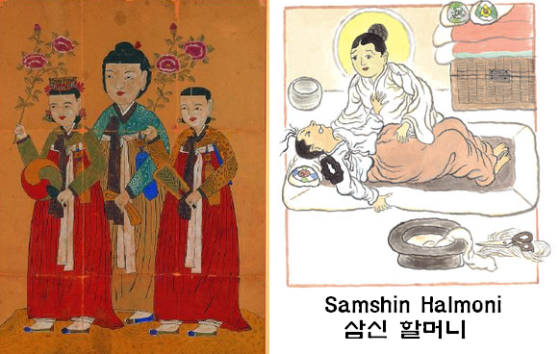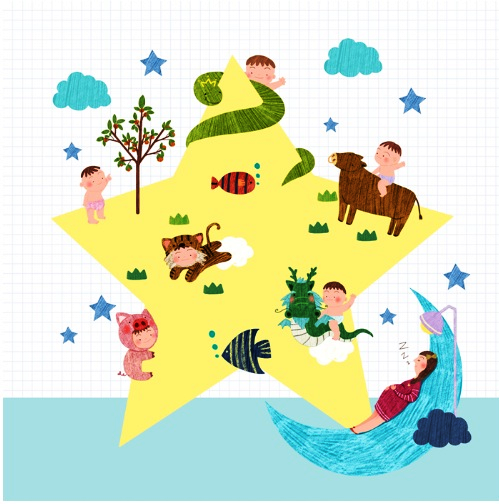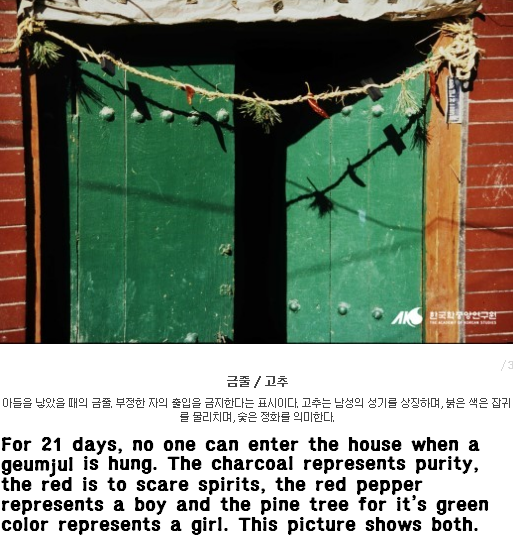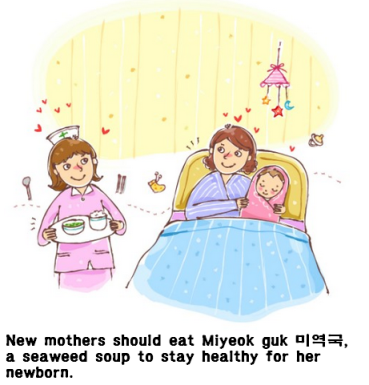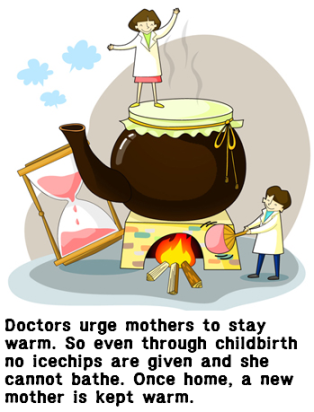Image may be NSFW.
Clik here to view.
Clik here to view.

Childbirth in Korea: Yeonjung’s Baby!
Image may be NSFW.
Clik here to view.
My friend YeonJung had a baby this past November 19th ^_^. Giving birth here in Korea is interesting on various levels. Most importantly though, I felt so honored that my friend let me be part of the process – letting us visit while she was still in the hospital. Especially being a foreigner I felt blessed to be allowed into this other world and she was patient enough to tell me about it lol. I hope you enjoy the video, it really surprised me how culturally different childbirth is in Korea and America.
Traditions
Pre birth
Traditionally, the Korean culture is hierarchical, with the role of the Korean woman being submissive to the husband and the husband’s family, especially the mother-in-law. So like many Asian countries, it was very desirable to give birth to boys who were treated with special care; especially first born boys. In the old days, to only have girls was not only grounds for divorce, but a surrogate mom may have been sought out to provide the family with a male child. Women often prayed and made offerings to the samshin halmoni ( 삼신 할머니 grandmother spirit), the Big Dipper, mountain spirits, Buddha, and to certain rocks and trees considered to be sacred. According to the myth of Korea’s founding, such an offering was made by the mother of Tan-gun, the founder of Korea, under a large tree before his birth.
Image may be NSFW.
Clik here to view.
The pregnant woman was expected to only look at ‘beautiful’ things. This practice is called taekyo 태교. Everything she ate, felt, thought or saw could influence the physical appearance of the baby. She could only eat foods that were unblemished and had to avoid broken or crooked pieces of fruit, cookies, vegetable, etc.Pregnant mothers are not to show pain during delivery as this is a sign of shame and weakness. All the women in this interview declined pain medication for these reasons.
Another aspect of taekyo is similar to our Western prenatal rituals, and focuses on the relationship between the baby and the mother. Usually this means focusing on reading to the baby, music, meditation, etc.
Then there is the belief in taemong 태몽. “Tae” means womb and “Mong” means a dream. So if the baby’s parents or grandparent’s dream of flowers then it indicates the baby will be a boy. Dreams of fruit, and the baby will be a girl (Source: 2009 Selin). Here is a good video about it: Youtube Image may be NSFW.
Clik here to view.
Labor & Delivery
Pregnant mothers are not to show pain during delivery as this is a sign of shame and weakness. She was expected to be silent so as to focus all her body energy into ‘chi’ – natural energy. (source1, source2)
After the Birth
Upon the birth of a child, a straw rope, or geumchul 금줄, is hung across the gate to the house. These talismans are used to frighten away evil spirits as well as to warn people not to enter the premises, as a child has recently been born. If more children are desired, the placenta and afterbirth are burned under the eaves of the house. If no more children are desired, these are burned some distance from the house, usually in a clean, sunny place on the side of a mountain. The ashes are often scattered to the winds or in a river. (source)
Image may be NSFW.
Clik here to view.
The mother eats seaweed soup ( miyeok guk 미역국, the same one that students cannot eat during exam time ) since it was to clean out the toxins from childbirth and was to be eaten by the mother for four weeks after giving birth. And because of its healthful properties, might have it three times a day over the next 2-3 months. It contains a high content of calcium and iodine, nutrients that are important for nursing mothers. Many women consume it during the pregnancy phase as well. It is also traditionally eaten on birthdays for this reason, a reminder of the first food that the mother has eaten and passed on to her newborn through her milk, thus bringing good fortune for the rest of the year. Image may be NSFW.
Clik here to view.
According to Korean practice, a new mother is supposed to cover up with blankets and keep warm to protect her loose bones; if a mother fails to do so, she may suffer from bone pain or rheumatism in her old age. Image may be NSFW.
Clik here to view.
A mother is really taken care of after childbirth, she doesn’t get kicked out of the hospital after 2 or 3 days (natural birth) or a week (cesarean birth). Though the price in America may just be the reason to get out! In Korea, giving birth is a few thousand dollars cheaper. After birth, the mother stays usually for about 2 weeks. The mother is pampered. It’s very different from America. I found this interesting article from a Korean woman who married an America and gave birth in America, and how she dealt with the culture shock.
A baby is not named for a while! Parents try to give their child a good name so that their child can live a healthy, happy, and successful life, but naming a child is not an easy task! Korean parents who believe that their child’s fortune is determined by its name often defer to naming specialists, believing that there are many factors to consider such as saju (사주 the “Four Pillars” – the year, month, day and hour of one´s birth) and eumyangohaeng (음양오행 the theory of yin and yang, and the five elements that constitute the universe). Naming specialists usually decide on a name one of two ways: by finding good Chinese characters for names proposed by the parents or by suggesting two or three names for the parents to choose from. A visit to the naming specialist can cost anywhere from 100,000 won to a million won ($100 – $1,000). (source)
YeonJung’s Baby!
Image may be NSFW.
Clik here to view.
